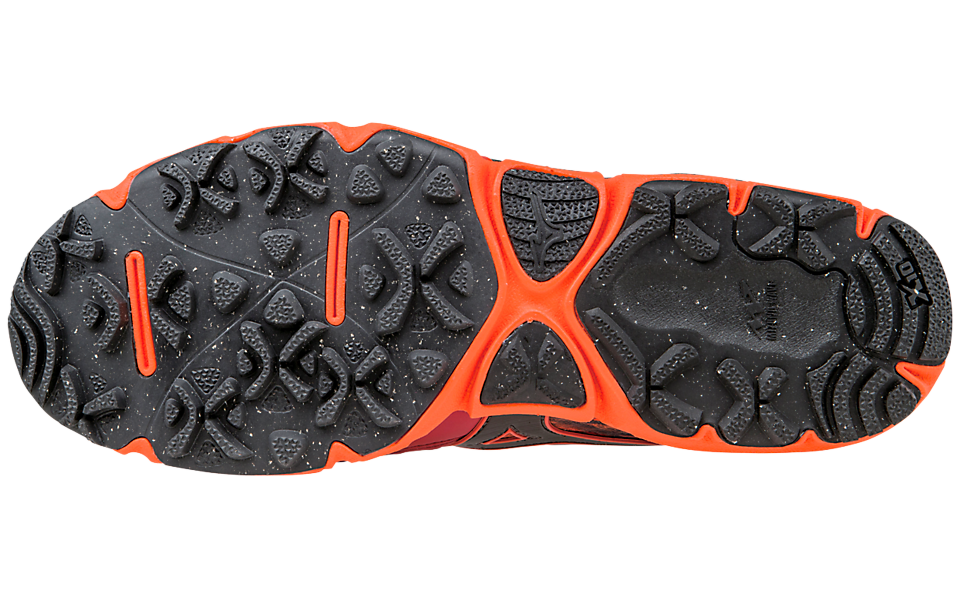
By Austin Bonds
Late last year I decided to forego the roads more in 2016 and instead opt for additional time on the trails around the state. This was a most satisfying choice as I have now completed one trail race a month since January (and nine total as I finished two in February). As to shoes, the Mizuno Wave Hayate 2 has been my mode of transportation across rocks, sticks, tree roots, creeks, leaves, pine straw, and mud in the aforementioned races. A question comes to mind, with numerous trail shoes available right now, how does the Hayate 2 stack up against other models in an increasingly crowded marketplace?
Mizuno uses Japanese words to name shoes, so I checked into the word “Hayate” for a translation: “fresh breeze.” Like a fast wind whipping across the sky, the Hayate 2 feels like a shoe meant for a quickened pace out of the box. In short, it’s on the lighter side. I can attest to this perception as I managed to secure a handful of age group victories in the trail races earlier this year (though adequate training plays a major role in this process too). Let’s unpack the good, the bad, and the ugly for the latest Hayate.

The Hayate 2 upper is simple: a breathable mesh is augmented by a few overlays to provide structure and definition for the feet. The Hayate 2 is firm as well, courtesy of the namesake Wave Plate and some additional foam underfoot. The focal point of the Hayate, however, is the outsole. Pronounced lugs and optimal placement provide stellar traction – regardless of the terrain. To put another way, the Hayate 2 grips the ground very well.
When I point out the shortcomings of a shoe (i.e. the bad), these points of note are intended to emphasize further scrutiny for future updates in the design lab. The first point of note is the laces. I prefer rounded laces, and those in the Hayate 2 are flat like a ribbon. This required a second knot, though I double knot all my laces to avoid stopping in the middle of a run or race. The heel slipped a touch too but creating a runner’s loop alleviated this issue and kept the feet secure in the shoe.
The final point of note concerning the Hayate 2 is forefoot protection. Unlike most trail shoes, the Hayate 2 is void of a rock plate up front, and this – in my races thus far this year – limits their possibility for distance. The Hayate 2 is a strong option for shorter races, but the lower protection factor is evident after a half marathon (or a very rocky course). I’d be remiss not to mention that there are always exceptions though as some runners can and will go long distances in this model.
There’s nothing ugly to say about the Hayate 2, except for the fact that proper wear of the shoe means that it should look ugly with time. Creek and river crossings, mud, grass, vines, jagged rocks, and dust will profoundly trash a trail shoe – and that’s how it should be. In other words, forget how trail shoes look from the moment you step off the asphalt or concrete and onto the trail. The woods are calling and we must go. Have fun trashing your trail shoes, and relish in their aged ugliness after many miles.
Have something to say? Leave a Comment
The padding, or lack thereof on these shoes is quite apparent on transition from trail to pavement. These are not shoes for pavement running, including running from a parking lot to a trail. I would add an Ugly: my big toe poked a hole in the top of the Wave Hayate while the rest of the shoe is still fairly new (about 150 miles, max.) Toe poke-through has only happened to me with Mizuno shoes, but never so quickly. In this case, most of my trail running has been consistently wet and muddy, but that shouldn’t make a lot of difference.